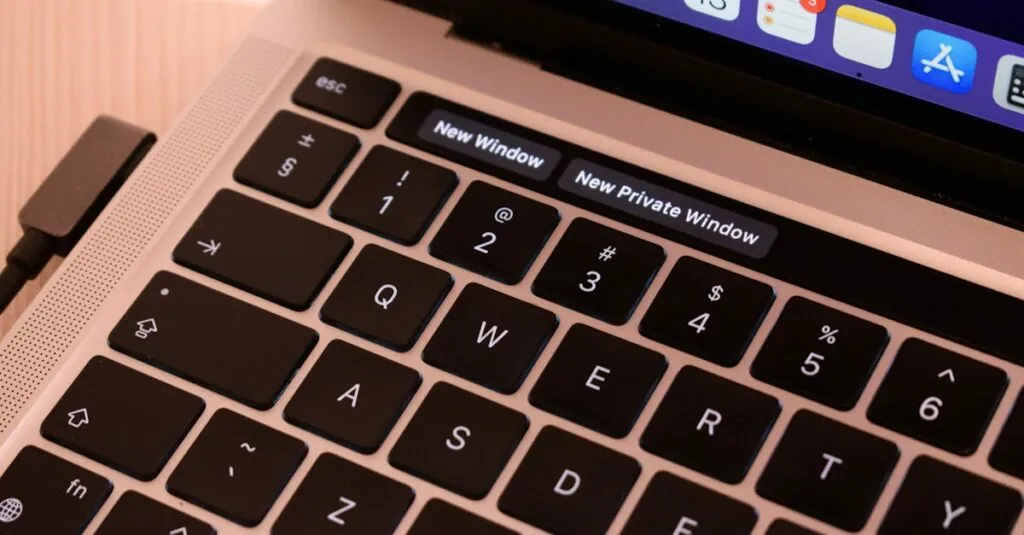Table of Contents
ToggleIf your iPhone’s browser feels like a chaotic mess of open tabs resembling a digital junkyard, you’re not alone. Many users find themselves drowning in a sea of forgotten pages, wondering if they’ll ever find their way back to the one they actually need. Fear not! Clearing those pesky tabs doesn’t have to be a Herculean task.
Understanding Open Tabs on iPhone
Open tabs on an iPhone refer to websites that users have accessed and are currently stored in the browser. Each tab holds a specific webpage, allowing for quick access to multiple sites without the need to navigate away from one to another.
What Are Open Tabs?
Open tabs represent individual pages within a web browser. They allow users to switch between various websites seamlessly. Browsers like Safari and Chrome enable users to view and manage these tabs easily. Users may find it helpful to keep open tabs for different purposes, such as research or shopping. The number of these tabs can grow quickly, often leading to a cluttered browsing experience.
Why Manage Open Tabs?
Managing open tabs enhances browsing efficiency and reduces distractions. A cluttered tab environment can lead to time lost in locating essential pages. By organizing and closing unnecessary tabs, users gain improved focus. Keeping open tabs limited also boosts device performance, as too many tabs can slow down web browsers and impact system resources. Regularly managing these tabs fosters a more streamlined and enjoyable internet experience.
Methods to Remove Open Tabs on iPhone
Managing open tabs on an iPhone is straightforward with effective strategies. Users can quickly restore order and enhance their browsing experience.
Using Safari to Close Tabs
Safari makes closing tabs simple. Users can tap the tab icon, located at the bottom right, to view all open tabs. Once visible, swiping left on an individual tab reveals a “Close” button. Alternatively, tapping the “Done” option at the bottom right provides a “Close All Tabs” feature, prompting users to confirm this action. This method helps eliminate clutter while ensuring that only essential tabs remain open.
Closing Tabs in Other Browsers
Many other browsers also facilitate tab management. In Google Chrome, the user taps the tab icon and selects “Close” on unwanted tabs. Firefox users can tap the tab icon and swipe to the left for quick closure. Microsoft Edge offers similar functionality, allowing users to long-press tabs for a closure option. These methods enable organized browsing, making it easy to streamline the experience across different platforms.
Tips for Efficient Tab Management
Efficient tab management simplifies browsing. By organizing open tabs, users can easily navigate to relevant pages without clutter.
Organizing Tabs for Better Browsing
Sorting tabs into specific groups enhances productivity. Users can create tab groups for research, shopping, or various projects in Safari. Labels for each group provide context and quick access. Individuals might consider saving frequently visited sites as bookmarks. Bookmarks reduce the need for open tabs, streamlining the browsing experience.
Grouping tabs allows for a focused browsing session. Users can quickly close all tabs in a group when finished. This practice significantly reduces distractions and enhances overall efficiency.
Using Extensions and Apps for Tab Management
Various extensions and apps improve tab management capabilities on browsers. Users can explore options such as Tab Wrangler or OneTab, which automatically manage and close inactive tabs. These tools preserve essential tabs while decluttering the browser.
Users of Chrome and Firefox should check their respective extension stores for additional management features. Applications that sync across devices offer a comprehensive solution for users who multitask. Visual layout features present a more organized approach to browsing. Effortless navigation becomes possible with the right tools in place.
Troubleshooting Common Issues
Managing open tabs on an iPhone can sometimes lead to frustrating issues. Users may encounter situations where tabs won’t close as expected.
If Tabs Won’t Close
When tabs refuse to close, it can stem from various causes. Users might need to restart the browser or their device for resolution. First, try force-closing the app by swiping up from the bottom of the screen and flicking the Safari window off. If issues persist, clearing the browser cache often helps. Go to Settings, select Safari, and tap on “Clear History and Website Data.” This process can refresh the browsing experience and eliminate underlying problems. Finally, ensuring that the iOS is updated to the latest version can prevent software bugs.
Resetting Safari Settings
Resetting Safari settings can resolve persistent webpage issues and enhance overall functionality. To initiate this process, users should first navigate to Settings and scroll down to Safari. After selecting “Clear History and Website Data,” it will remove all browsing data, leading to a clean slate. Be sure to know that this action also clears cookies and saved login information. Additionally, users can opt to adjust settings for enhanced performance, such as blocking pop-ups or enabling “Prevent Cross-Site Tracking.” These adjustments can improve the browsing experience significantly, leading to smoother navigation and easier management of tabs.
Managing open tabs on an iPhone doesn’t have to be a daunting task. With the right techniques users can streamline their browsing experience and keep their devices running smoothly. By utilizing the various methods for closing tabs and organizing them into groups users can enhance productivity and reduce distractions.
Incorporating tools like bookmarks and tab management apps can further simplify the process. Regularly addressing tab clutter not only improves performance but also fosters a more enjoyable internet experience. Embracing these strategies will help users take control of their browsing habits and make the most of their iPhone.




